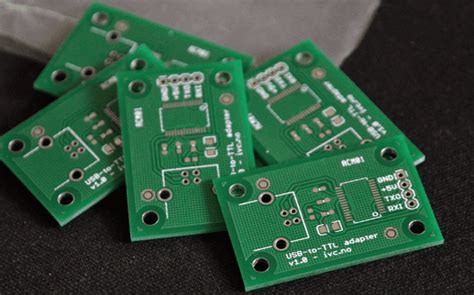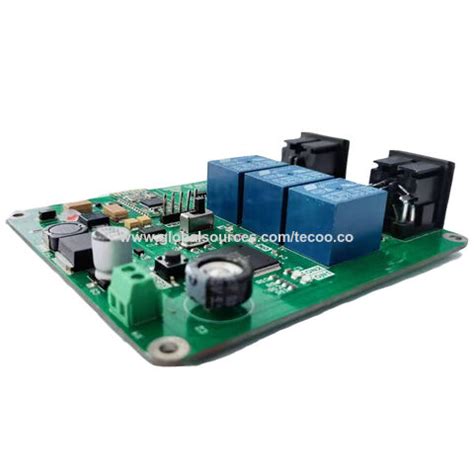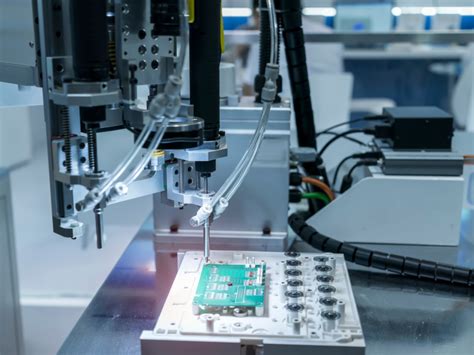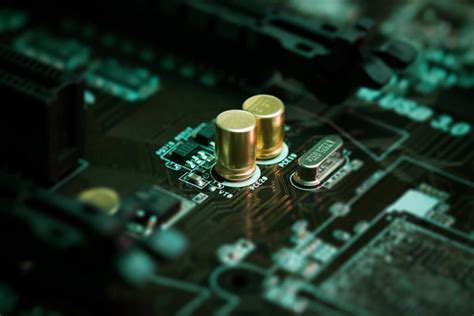Flex pcb production
Advantages Of Flex PCB Over Rigid PCB
In the realm of electronic design and manufacturing, the choice between flexible printed circuit boards (PCBs) and their rigid counterparts is a decision that can significantly impact the performance, cost, and reliability of the final product. Flex PCBs, as the name suggests, are designed to be flexible, allowing them to be bent, folded, or twisted without damaging the circuits. This inherent flexibility offers several advantages over traditional rigid PCBs, making them an increasingly popular choice in various applications.
To begin with, one of the most notable advantages of flex PCBs is their ability to conform to complex shapes and fit into tight spaces.
This characteristic is particularly beneficial in modern electronic devices, which are continually shrinking in size while increasing in functionality. For instance, in wearable technology, medical devices, and compact consumer electronics, the ability to design circuits that can bend and flex allows engineers to maximize space efficiency and create more ergonomic and aesthetically pleasing products. Consequently, this flexibility can lead to innovative designs that would be impossible with rigid PCBs.
Moreover, flex PCBs offer enhanced durability and reliability, especially in environments subject to mechanical stress or vibration.
The materials used in flex PCBs, such as polyimide, are not only flexible but also robust, providing excellent resistance to heat, chemicals, and moisture. This makes them ideal for applications in harsh environments, such as automotive, aerospace, and industrial sectors, where reliability is paramount. Additionally, the reduced number of connectors and interconnects in flex PCBs minimizes potential points of failure, further enhancing their reliability compared to rigid PCBs.
In addition to their physical advantages, flex PCBs can also contribute to cost savings in certain applications.
While the initial production cost of flex PCBs may be higher due to the complexity of their design and manufacturing processes, they can lead to cost reductions in the long run. For example, the ability to eliminate connectors and reduce the number of components can lower assembly costs and improve overall system reliability, reducing maintenance and repair expenses. Furthermore, the lightweight nature of flex PCBs can contribute to lower shipping costs and improved energy efficiency in portable devices.
Another significant advantage of flex PCBs is their ability to support dynamic applications.
Unlike rigid PCBs, which are static and fixed in place, flex PCBs can move and flex during operation. This makes them ideal for applications where movement is a factor, such as in robotics, where circuits need to move with the joints, or in foldable smartphones, where the display and circuitry must bend without breaking. The dynamic capabilities of flex PCBs open up new possibilities for innovation and design in various fields.
In conclusion, while both flex and rigid PCBs have their respective places in electronic design, the advantages of flex PCBs in terms of flexibility, durability, cost-effectiveness, and dynamic application support make them an attractive option for many modern applications. As technology continues to evolve and the demand for smaller, more efficient devices grows, the role of flex PCBs is likely to expand, offering designers and engineers new opportunities to push the boundaries of what is possible in electronic design.

Key Materials Used In Flex PCB Manufacturing
In the realm of modern electronics, flexible printed circuit boards (PCBs) have emerged as a pivotal innovation, offering versatility and adaptability in various applications. The production of flex PCBs involves a meticulous selection of materials, each contributing to the board’s overall performance and reliability. Understanding the key materials used in flex PCB manufacturing is essential for appreciating their functionality and the advantages they offer over traditional rigid PCBs.
At the core of flex PCB production is the substrate material, which provides the foundational layer upon which the circuit is built.
Polyimide is the most commonly used substrate due to its excellent thermal stability, flexibility, and chemical resistance. This material can withstand high temperatures, making it ideal for applications that require durability under extreme conditions. Additionally, polyimide’s flexibility allows the circuit to bend and twist without compromising its structural integrity, a crucial feature for devices that demand compact and adaptable designs.
Transitioning from the substrate, the next critical component is the conductive material, typically copper.
Copper is favored for its superior electrical conductivity, which ensures efficient signal transmission across the circuit. In flex PCB manufacturing, copper is often deposited onto the substrate through a process called electroplating, which creates a thin, uniform layer that adheres well to the polyimide. This layer is then etched to form the desired circuit pattern, a process that requires precision to maintain the integrity of the conductive pathways.
To protect the copper circuitry and enhance the board’s durability, a coverlay material is applied.
This layer serves as an insulating barrier, shielding the copper from environmental factors such as moisture and dust, which could otherwise lead to corrosion or short circuits. Polyimide is again a popular choice for the coverlay due to its compatibility with the substrate and its ability to maintain flexibility. In some cases, a solder mask may be used as an alternative or additional protective layer, providing further insulation and facilitating the soldering process during component assembly.
Adhesives play a crucial role in flex PCB manufacturing, binding the various layers together to form a cohesive unit.
These adhesives must possess strong bonding properties while maintaining flexibility to accommodate the board’s bending and twisting. Acrylic and epoxy-based adhesives are commonly used, each offering distinct advantages. Acrylic adhesives are known for their flexibility and resistance to environmental stressors, while epoxy adhesives provide robust mechanical strength and thermal stability.
As we delve deeper into the intricacies of flex PCB production, it is important to consider the role of surface finishes.
These finishes are applied to the exposed copper areas to prevent oxidation and ensure reliable soldering. Common surface finishes include immersion gold, immersion silver, and organic solderability preservatives (OSP). Each finish offers unique benefits; for instance, immersion gold provides excellent corrosion resistance and a smooth surface for soldering, while OSP is a cost-effective option that maintains good solderability.
In conclusion, the production of flex PCBs involves a careful selection of materials, each contributing to the board’s flexibility, durability, and performance. From the polyimide substrate and copper conductors to the protective coverlay and adhesives, every component plays a vital role in ensuring the functionality and reliability of the final product. As technology continues to advance, the demand for flexible PCBs is expected to grow, driven by their ability to meet the evolving needs of modern electronic devices. Understanding the materials used in their manufacturing is essential for appreciating the capabilities and advantages of this innovative technology.

Design Considerations For Flex PCB Production
In the realm of modern electronics, the demand for compact, lightweight, and flexible devices has led to the increasing popularity of flexible printed circuit boards (PCBs). These innovative circuits offer a myriad of advantages over traditional rigid PCBs, including enhanced flexibility, reduced weight, and the ability to conform to complex shapes. However, the production of flex PCBs requires careful consideration of several design factors to ensure optimal performance and reliability. Understanding these design considerations is crucial for engineers and manufacturers aiming to harness the full potential of flex PCBs.
To begin with, material selection plays a pivotal role in the design of flex PCBs.
Unlike rigid PCBs, which are typically made from fiberglass-reinforced epoxy, flex PCBs are constructed using flexible substrates such as polyimide or polyester. These materials provide the necessary flexibility and thermal stability required for dynamic applications. However, choosing the right substrate involves balancing factors such as cost, flexibility, and environmental resistance. Polyimide, for instance, is favored for its excellent thermal and chemical resistance, making it suitable for high-temperature applications. On the other hand, polyester is often chosen for cost-sensitive projects where moderate flexibility suffices.
In addition to material selection, the design of the circuit layout is another critical consideration.
The layout must account for the unique mechanical properties of flex PCBs, ensuring that the circuits can withstand bending and flexing without compromising performance. This involves strategic placement of components and traces to minimize stress concentrations. For instance, traces should be routed perpendicular to the bend lines to reduce the risk of cracking. Moreover, incorporating curved traces instead of sharp angles can further enhance the board’s durability by distributing mechanical stress more evenly.
Furthermore, the choice of adhesive and coverlay materials is essential in flex PCB design.
Adhesives are used to bond the layers of the PCB, and their selection depends on factors such as flexibility, temperature resistance, and chemical compatibility. Similarly, coverlays, which protect the circuit from environmental factors, must be chosen with care. Polyimide coverlays are commonly used due to their excellent thermal and mechanical properties. However, the thickness of the coverlay must be optimized to provide adequate protection without compromising the board’s flexibility.
Another important aspect of flex PCB design is the consideration of impedance control.
As electronic devices become more complex, maintaining signal integrity is paramount. This requires careful design of the trace geometry and stack-up to ensure consistent impedance throughout the circuit. Techniques such as controlled impedance routing and differential pair routing are often employed to achieve this. Additionally, the use of simulation tools can aid in predicting and mitigating potential signal integrity issues.
Finally, manufacturability is a key consideration in flex PCB design.
The design must be optimized for efficient production processes, taking into account factors such as panel utilization and yield. This involves collaborating closely with manufacturers to understand their capabilities and limitations. By doing so, designers can ensure that their flex PCBs are not only functional but also cost-effective to produce.
In conclusion, the production of flex PCBs involves a complex interplay of design considerations that must be carefully balanced to achieve the desired performance and reliability. From material selection to circuit layout and manufacturability, each aspect plays a crucial role in the successful implementation of flex PCBs in modern electronic devices. By understanding and addressing these considerations, engineers and manufacturers can unlock the full potential of this versatile technology.

Common Challenges In Flex PCB Fabrication And Solutions
Flex PCB production, a critical component in modern electronics, presents unique challenges that require careful consideration and innovative solutions. As the demand for smaller, more efficient electronic devices grows, the need for flexible printed circuit boards (PCBs) has become increasingly prominent. However, the fabrication of these PCBs is not without its hurdles. Understanding these challenges and their potential solutions is essential for manufacturers aiming to produce high-quality flex PCBs.
One of the primary challenges in flex PCB fabrication is material selection.
Flex PCBs require materials that can withstand bending and flexing without compromising electrical performance. Polyimide is commonly used due to its excellent thermal stability and flexibility. However, selecting the right adhesive and copper foil is equally important to ensure the board’s durability and functionality. Manufacturers must carefully evaluate the thermal and mechanical properties of these materials to prevent delamination and cracking, which can lead to circuit failure.
Another significant challenge is the precision required in the manufacturing process.
Flex PCBs often have complex designs with fine lines and spaces, making them susceptible to issues such as misalignment and short circuits. To address this, manufacturers employ advanced photolithography techniques and automated optical inspection systems. These technologies help ensure that the intricate patterns are accurately transferred onto the substrate, reducing the risk of defects and improving overall yield.
Moreover, the handling and processing of flex PCBs demand specialized equipment and techniques.
Unlike rigid PCBs, flex circuits are more prone to damage during manufacturing due to their thin and pliable nature. To mitigate this, manufacturers use specialized fixtures and carriers that provide support and protection throughout the production process. Additionally, implementing controlled environments with precise temperature and humidity levels can prevent warping and other environmental-induced defects.
The soldering process also presents unique challenges in flex PCB production.
The thermal sensitivity of flexible materials requires careful control of soldering temperatures to avoid damaging the substrate. Techniques such as laser soldering and selective soldering are often employed to provide precise heat application, minimizing the risk of thermal stress. Furthermore, using low-temperature solder alloys can help reduce the thermal impact on the flex PCB, ensuring reliable connections without compromising the board’s integrity.
In addition to these technical challenges, cost considerations play a significant role in flex PCB fabrication.
The specialized materials and processes involved can lead to higher production costs compared to traditional rigid PCBs. To address this, manufacturers are continually seeking ways to optimize production efficiency and reduce waste. Implementing lean manufacturing principles and investing in automation can help streamline operations, ultimately lowering costs and improving competitiveness.
Finally, ensuring the reliability and longevity of flex PCBs is paramount.
Environmental factors such as moisture, temperature fluctuations, and mechanical stress can impact the performance of these circuits over time. To enhance reliability, manufacturers conduct rigorous testing, including thermal cycling, humidity exposure, and mechanical flexing tests. These tests help identify potential weaknesses and allow for design improvements that enhance the board’s resilience.
In conclusion, while flex PCB production presents several challenges, advancements in materials, technology, and processes offer viable solutions. By addressing issues related to material selection, precision manufacturing, handling, soldering, cost, and reliability, manufacturers can produce high-quality flex PCBs that meet the demands of modern electronic applications. As the industry continues to evolve, ongoing research and innovation will be crucial in overcoming these challenges and driving the future of flexible electronics.






